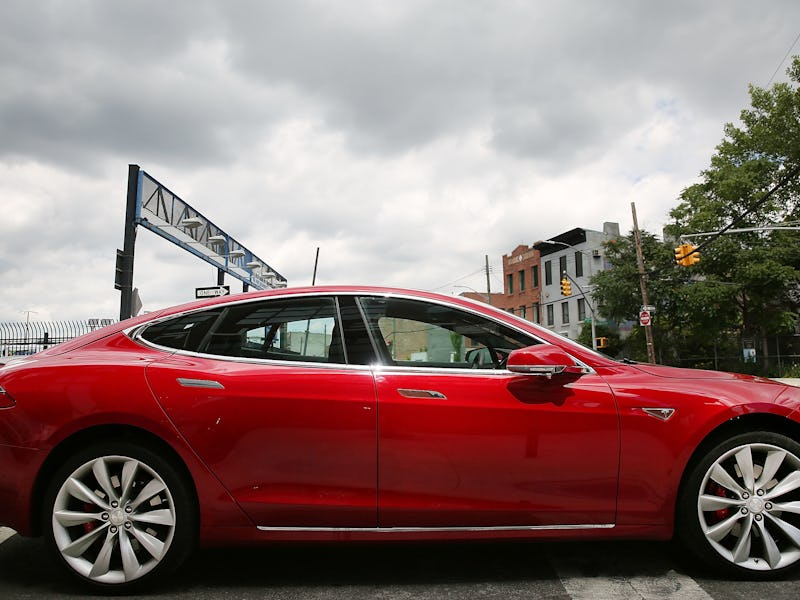How do Electric Vehicle Tax Credits Work?
You've got questions, we've got answers.

Electric cars could be an incredibly important weapon in the fight to reduce carbon emissions around the world and save the world from a climate change cataclysm. But if the last few decades have been any indication, people won’t jump onboard to help save the world without some kind of green incentive. And no, we’re talking about the kind that grows on trees, we’re talking about money.
Tax credits for electric vehicles have been a major boon for the car industry, and a big reason why more car companies have entered into this technology. New owners don’t have to be put off by the high prices — they can take advantage of federal tax credits in order to help ease that financial hit. Of course, there is a lot of concern about what will happen to Tesla and Nissan Leaf sales when those $7,500 federal credits in the United States are used up. For now, those tax credits are a major reason why electric vehicles are doing surprisingly well among car buyers.
But how exactly do they work? Jackie Perlman, principal tax research analyst at The Tax Institute at H&R Block, tells Inverse precisely how consumers can take advantage of electric vehicle tax breaks.
Go Ultra Low Kia Soul EV on charge on a London street.
When you buy an electric vehicle, what credits do you get? How do they work?
A federal tax credit is available for any qualified plug-in-electric motor vehicle. According to Perlman, those credits qualify for vehicles purchased both for personal use or business use. They can be used on leases as well, but not for resales (with some exceptions, mostly for nonprofit organizations). “The vehicle must be new (i.e. the credit isn’t available for buying a used vehicle), drivable on public roads, and driven mostly in the U.S.,” says Perlman.
The IRS keeps a list of qualifying models and credit amounts, but if you’re going in blind, you’ll have to rely on the manufacturer’s certification that a vehicle qualifies.
Those credits generally range between $2,500 to $7,500, but all this pends on the capacity of the vehicle’s battery.
Another tidbit most consumers probably don’t know: “The credit phases out once a manufacturer sells at least 200,000 vehicles in the U.S.,” says Perlman. A company like Tesla has used tax credits to help fuel (pun intended) its success, but Tesla’s credits will run out when all the Tesla Model 3 vehicles are sold.
Tax credits use to be available for two-wheeled motor vehicles as well, like motorcycles, but Perlman says these expired after 2016.
Nissan Leaf charging
When you pay taxes, what do you have to do with your credits to make them work?
Remember the number “8936” — you’re going to need to come back to it. Taxpayers need to fill out and file IRS Form 8936, entitled “Qualified Plug-in Electric Drive Motor Vehicle Credit” in order to report and calculate their electric vehicle credit. This is for cars purchased for both business and personal use.
“It is not necessary to attach anything to the tax return,” says Perlman, “but taxpayers should keep purchase and certification documents with their tax records.”
LTO, CA - NOVEMBER 05: Two Tesla Model S cars are displayed at a Tesla showroom on November 5, 2013 in Palo Alto, California.
What’s the future hold for tax credits? How is the rise in electric vehicle usage expected to affect electric car tax credits moving forward?
“The qualified plug-in electric vehicle credit is the only federal credit currently available for electric vehicles,” says Perlman. “It is entirely possible that more taxpayers will be able to claim this credit as the use of plug-in vehicles expands,” but nothing is certain. “More manufacturers may get into the game as present manufacturers reach the 200,000 limit,” so even though Tesla and Nissan seem to dominate the market, their competitors may simply be waiting for them to max-out on available credits for consumers.
“Credits for ‘regular’ hybrid vehicles, three-wheeled plug-ins, plug-in conversion kits, and low-speed electric vehicles have all expired,” says Perlman. So have credits for other types of alternative vehicles, such as natural gas, lean burn technology, and hydrogen powered vehicles.
Federal credits, however, aren’t the only type of tax breaks electric vehicle consumers can take advantage of. There are 17 states that also offer tax incentives, plus other breaks taxpayers can take advantage. You can learn more at Plugless Power.